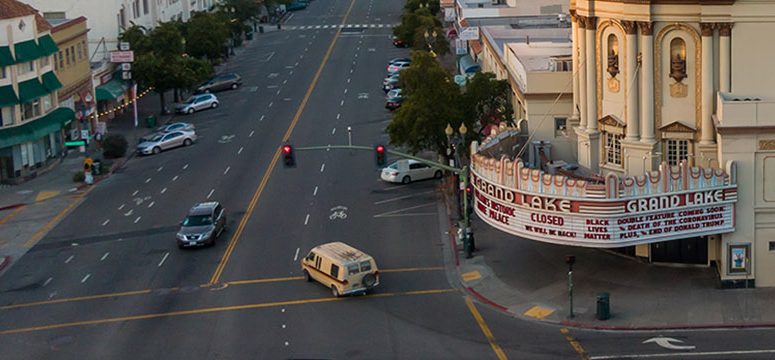Cities are frequently supportive of closing street access to limit car traffic in well-off neighborhoods. Similar treatments could be used to create walk/bike-friendly streets - often called bike boulevards or neighborhood greenways. But, in a pernicious double standard, when bicyclists and pedestrians request these sorts of facilities, city leaders turn them down because they don't want to divert drivers.
There are easily dozens of examples in Southern California where cities limit cars from entering well-off neighborhoods.
In the Carthay Circle area, just south of Wilshire Boulevard and west of Fairfax Avenue, there are three examples. At the top of the post is 8th Street at Fairfax. Similar closed street ends are found a block north and south of 8th.
In Brookside, Mansfield Avenue is blocked off to keep Wilshire Boulevard office traffic from heading north.
In Hancock Park, this Hudson Avenue island prevents drivers from turning south off of 6th Street. This example improves safety by minimizing turns along a lower-visibility curve.
There are many more examples - from the Country Club gates off Pico Boulevard to bollards off Hoover Street in Pico Union. For the most part, these diverters keep drivers from cutting through well-off residential areas. Occasionally they are implemented for law enforcement purposes - to keep cars from driving through high-crime areas. Readers - submit your favorite examples in the comments.
If you thought this is something that the city used to do, but doesn't do any more, then check out this September 2020 motion by City Councilmember Paul Koretz. Note that Koretz was quick to cite "great concern" about emergency response times for a project that would have made Melrose Avenue more walkable and bikeable. But for a nearby "charming, elegant area of single-family homes, duplexes, and small apartment buildings" that is seeing "cut-through traffic," Koretz is pushing to "block (cul-de-sac) West 4th Street just east of La Cienega Boulevard." No mention of emergency response times in that motion.
And if you thought that these sorts of closures are only in the city of L.A., here's an example in Manhattan Beach. Potted trees block nearby Sepulveda Boulevard commercial traffic from heading down residential 30th Street.
These access closures are a good thing. Keeping drivers from cutting through neighborhoods improves the quality of life for residents in those neighborhoods. Cities should do more features like these.
Strategically stringing together diverters along a corridor can also create bike boulevards or neighborhood greenways. A bike boulevard is a relatively quiet street - shared by pedestrians, cyclists, and drivers - where biking and walking is prioritized, often created by adding traffic diverters that allow cyclists, but not cars, to continue straight. Bike boulevards are not uncommon in many cities looking to foster safe convenient cycling. There has been renewed interest in them nationally in recent weeks.
L.A. has a couple of examples of facilities that more or less pass for bike boulevards.
What will it take to string together more of these diverters to arrive at truly bike-friendly streets for Southern California?






